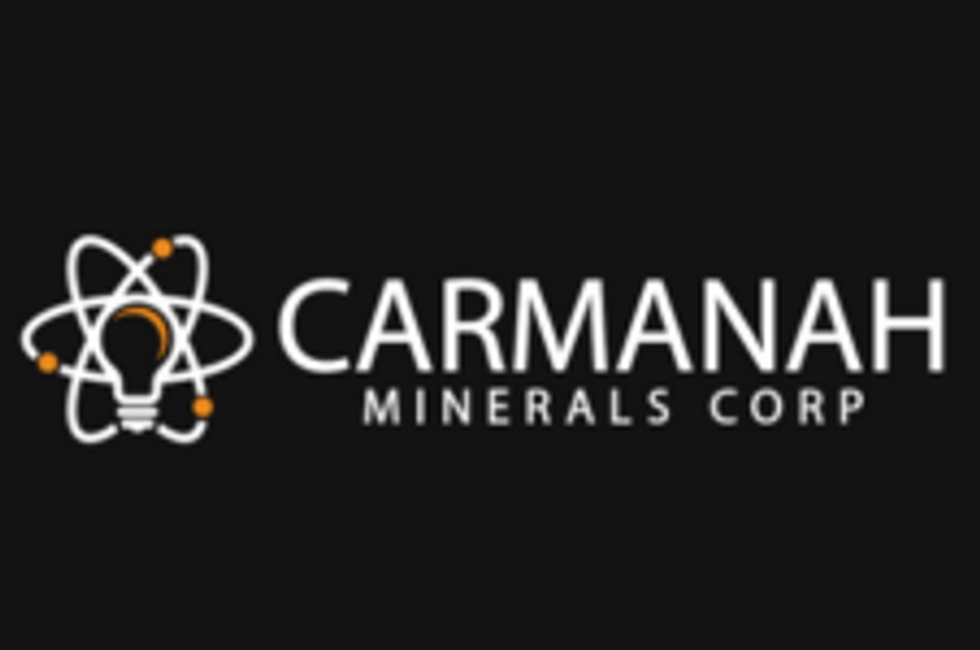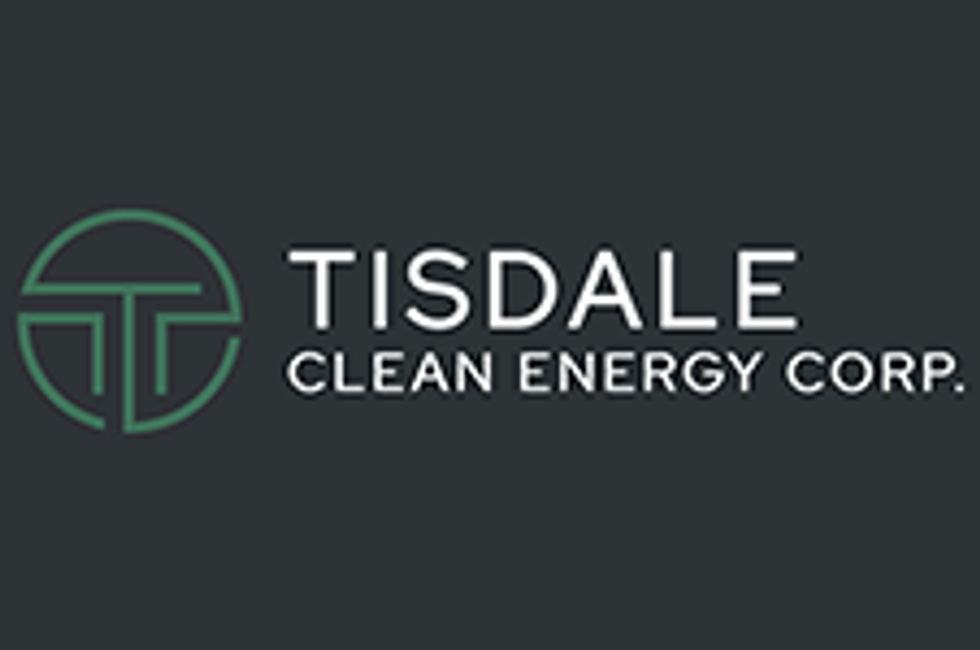- AustraliaNorth AmericaWorld
Investing News NetworkYour trusted source for investing success
- Lithium Outlook
- Oil and Gas Outlook
- Gold Outlook Report
- Uranium Outlook
- Rare Earths Outlook
- All Outlook Reports
- Top Generative AI Stocks
- Top EV Stocks
- Biggest AI Companies
- Biggest Blockchain Stocks
- Biggest Cryptocurrency-mining Stocks
- Biggest Cybersecurity Companies
- Biggest Robotics Companies
- Biggest Social Media Companies
- Biggest Technology ETFs
- Artificial Intellgience ETFs
- Robotics ETFs
- Canadian Cryptocurrency ETFs
- Artificial Intelligence Outlook
- EV Outlook
- Cleantech Outlook
- Crypto Outlook
- Tech Outlook
- All Market Outlook Reports
- Cannabis Weekly Round-Up
- Top Alzheimer's Treatment Stocks
- Top Biotech Stocks
- Top Plant-based Food Stocks
- Biggest Cannabis Stocks
- Biggest Pharma Stocks
- Longevity Stocks to Watch
- Psychedelics Stocks to Watch
- Top Cobalt Stocks
- Small Biotech ETFs to Watch
- Top Life Science ETFs
- Biggest Pharmaceutical ETFs
- Life Science Outlook
- Biotech Outlook
- Cannabis Outlook
- Pharma Outlook
- Psychedelics Outlook
- All Market Outlook Reports

IsoEnergy President and CEO Craig Parry discusses the rebounding uranium market, the company’s latest acquisition and its continuing exploration work in the Athabasca Basin.
IsoEnergy President and CEO Craig Parry discusses the rebounding uranium market, his company’s latest acquisition in Nunavut and its continuing exploration work on its Athabasca Basin properties.
IsoEnergy (TSXV:ISO) is a mineral exploration company and subsidiary of NexGen Energy (TSX:NXE), a $1-billion uranium exploration company that made one of the most exciting uranium discoveries in decades. The company has built a portfolio of early stage mineral exploration properties in the prolific eastern Athabasca Basin of Saskatchewan, including the Radio and Thorburn Lake projects. In February 2017, IsoEnergy acquired the Mountain Lake uranium deposit in the Hornby Bay Basin, Nunavut.
IsoEnergy has successfully raised more than $11 million in gross proceeds and recently launched winter drilling programs at both Radio and Thorburn.
INN: Can you give some insights to our audience regarding the uranium market based on the recent spot price increases and the momentum we have seen so far?
CP: We saw the spot price of uranium moving down to a low of nearly US$18 per pound in November and early December last year. Since that time, the price has rebounded over 40 percent and is now sitting at US$26 per pound. Of course, at US$18 per pound there is not a single mine on the planet that makes money. Not every mine sells on the spot market; most in fact sell at long-term contracts. That is an indication of where contracts will be written going forward. We know that most producers are coming off long-term contracts over the next 12 months. None of these companies will write contracts at prices where they are losing money. There was such a dramatic price imbalance that the only thing that could happen was a rebound in prices. We have all been predicting that for some time, and now we have seen it with a solid jump in uranium prices which has led to a very solid rebound in uranium equity prices.
We have seen NexGen Energy jump from around a low of $1.44 per share back in November to up around $4.40 per share. It is a solid plus-100-percent rebound in the share price. Cameco (TSX:CCO,NYSE:CCJ) dropped down to $9.88, and we have seen a rebound in price up to a high of $17 or $18, but it is now sitting at around $15. Again, a very solid rebound. That is a good indicator, and I suppose some people are asking if this is the real deal in terms of a strong uranium bull market. We think that it absolutely is because we have an imbalance that has created the jump in spot price in the last while, and we’re also hearing that customers of major producers like Cameco are now looking to write long-term contracts. We might see quite a dramatic jump in spot price over the next 12 months.
We are seeing good industry leadership from the majors. Kazatomprom has announced they will cut production by 10 percent this year to hopefully drive a higher price. We understand that they may continue that for several more years. Cameco cut 4 million pounds per annum of production by closing Rabbit Lake and its producing mines in the US. That has had an impact as well. We understand there may be more positive news on that front, and they are potentially looking at reducing supply from their biggest producer, McArthur River. That would obviously be a very positive indicator for the industry. Everything is in place for a roaring bull market over the next 12 months.
INN: IsoEnergy has built an impressive portfolio of early stage uranium projects in Canada’s prolific Athabasca Basin. However, your latest acquisition is located in Nunavut. Please tell our readers more about the Mountain Lake uranium deposit and the value it brings to your shareholders.
CP: The market had been in the doldrums for a number of years, so when we were alerted to the opportunity to stake that ground and establish a footprint over an existing historic resource, the opportunity was too good to pass up. It is very rare that you get an opportunity to peg an 8-million-pound resource, so we took that opportunity. Steve Blower, our vice-president of exploration, deserves the credit. Pitchstone Exploration had a deposit there, and a number of explorers had worked on that through the 1970s and 1980s, proving up a resource there of 8 million pounds at good grade.
The Mountain Lake deposit as it stands is 8 million pounds in historic resources; of course, we need to do a little bit more work to bring that into 43-101 compliance. Bearing in mind that it only cost us $20,000 to stake the ground, if you were to put a price on the value of that deposit I would say the very minimum would be probably 50 cents or $1 per pound in the ground. We have created several millions of dollars’ worth of value for our shareholders very quickly. That is the approach we are taking with business development going forward and growing our business by identifying and capitalizing on exceptional value opportunities.
The existing historic resource is based on earlier drilling. There is more work that has been done since. We will be looking to capitalize on that data and expand that resource by incorporating that information into the resource model going forward.
INN: It is well known that the Athabasca region is highly suitable for uranium exploration in terms of government, local support and infrastructure. How does Nunavut compare to that type of offering?
CP: We are very much focused on the Athabasca Basin. What Saudi Arabia is to oil, the Athabasca Basin is to uranium. The grade of deposits there is typically 100 times the mined grade worldwide. They are very high-grade, high-quality deposits, and there is a huge amount of value in those deposits. That is where we want to be, and we love operating in Saskatchewan. The government is supportive of mining and they have the infrastructure, human resources, contractors and consultants all in place there.
Nunavut is another great jurisdiction in Canada. We think it is a good place to do business, and it presents extraordinary opportunities. We staked the Mountain Lake ground only a few months ago and had that granted to us very quickly. There are a number of other companies in the region with very sizable resources there, like Areva (EPA:AREVA) and the Kiggavik project.
INN: Switching gears to your Athabasca properties, you recently announced results from Phase 1 exploration programs at both the Thorburn Lake and Radio properties. Please share some of the highlights of these results and what the goals are for the Phase 2 winter programs at these properties.
CP: Our initial round of drilling followed up NexGen’s drilling completed back in 2013. One of those holes in the southwest property is located only 2 to 3 kilometers away from the Roughrider uranium project. Close to that deposit, NexGen intersected some strong-looking, altered rocks in the sandstone within the basin and above the unconformity down in that southwest part of the property. We followed that up with a number of drill holes during the campaign we completed last summer. We have continued that campaign, but of course we had to wait a couple of months for the right ice conditions to set in before we could get back in and drill.
The intensity of alteration we have seen there is really something that is typically associated with mineralization close to that at the Roughrider deposit. We are using that as a guide to go by. During the winter campaign, we will be infilling around those holes we completed in the summer and that single NexGen hole. We are in the ballpark, and if it’s there we will find it at Radio. We are looking forward to those results coming out as we continue the drilling program.
We are also drilling Thorburn Lake. Of course, that is our second-highest-priority target within the portfolio, and it sits only 7 or 8 kilometers away from the giant Cigar Lake deposit owned by Cameco. It sits along strike and along some of the conductive trends that are associated with that great deposit. It also sits quite close to Cameco’s Thorburn Lake uranium occurrence, which they drilled a number of years ago and hit some interesting results of more than 3 percent uranium over 10 meters.
The previous owners of the project, Titan Uranium, drilled a number of holes back in the late 2000s that intersected mineralization around the unconformity, and we are following up on those results. We completed a number of drill holes back in the summer, but we have had to wait for the ice to set there. The better targets and the obvious continuation of that mineralization that we intersected is towards the east on the lake. We had a good winter with thick ice formation there, so the conditions are excellent for drilling on the lake.
We see the Phase 2 winter program as a continuation of our summer drilling, following up the positive results NexGen had at Radio, and all of the targets we have proven up there. At Thorburn Lake, we are following up that known mineralization that has been intersected by previous owners of the property. We have 4,000-plus meters of drilling assigned to each project and will be drilling around 10 holes on each property. What we are targeting is a continuation of the mineralization that we have seen. At Radio, we are looking for mineralization associated with intensely altered rocks. What we are looking for going forward is more significant intercepts of mineralization and punching down below the unconformity under the sandstone and into the basement looking for structurally controlled mineralization. That is something that has not been explored on the properties that we have in the portfolio, so it is great to target those deposits. We have the best team around to do that considering their experience and success.
We have the great advantage of having Leigh Curyer and Garrett Ainsworth on our board of directors. Leigh led the team that discovered NexGen’s major discoveries in the southwest Athabasca. Garrett was responsible for the discovery of Patterson Lake South body, currently owned by Fission Uranium (TSX:FCU), and has been instrumental in drilling out many of those pounds that were found at NexGen’s Arrow deposit. He understands basin-hosted mineralization better than just about anyone. In addition, Steve Blower, our vice-president of exploration, was in charge of exploration at Denison Mines (TSX:DML,NYSEMKT:DNN) when they discovered the Gryphon component.
INN: How well funded is IsoEnergy for reaching your exploration goals in 2017?
CP: Another great advantage for us is that we acquired these properties from NexGen, our biggest shareholder currently owning 72 percent of the stock. NexGen is a very supportive shareholder and can help raise capital. We also have a track record of success in exploration in recent times in the Athabasca, and that has given us the ability to raise money. Last November, we completed $11 million worth of financing for IsoEnergy. We are very much committed to doing what we say we will do, testing the targets and exploring those properties. We have spent a fair bit of money on exploration drilling so far, but we still have around $6 million in the bank.
We are well funded for the program for the next 12 months, but we will take the opportunity to raise more money to fund the exploration work that Blower and the team will be completing over the next 24 months. We were successful last year in raising that $11 million, and we have seen some of the numbers of our competitors who are also raising several millions of dollars for exploration. The improving share price of equities is driving demand for uranium stocks, equity capital and financing, so we are in a good position.
CEO interviews are part of investor education campaigns for clients advertising on the Investing News Network and is paid for by the client.
The Investing News Network interviews a CEO for an understanding of their perspective on the company, the investment potential of the company and market news related to the company. The information contained here is for information purposes only and is not to be construed as an offer or solicitation for the sale or purchase.
Outlook Reports
Featured Energy Investing Stocks
Browse Companies
MARKETS
COMMODITIES
| Commodities | |||
|---|---|---|---|
| Gold | 2388.26 | +6.46 | |
| Silver | 28.83 | -0.06 | |
| Copper | 4.35 | -0.03 | |
| Oil | 85.90 | +0.49 | |
| Heating Oil | 2.67 | +0.02 | |
| Natural Gas | 1.69 | 0.00 | |
Investing News Network websites or approved third-party tools use cookies. Please refer to the cookie policy for collected data, privacy and GDPR compliance. By continuing to browse the site, you agree to our use of cookies.





